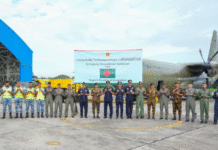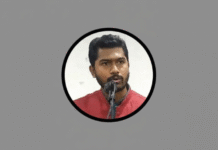Kalai, like many other villages in Bangladesh, appears a rural idyll at first sight. But several villagers here have resorted to selling organs to pay back microcredit loans that were meant to lift them out of poverty.
Journalist Sophie Cousins reports on an alarming consequence of the microfinance revolution.
Green rice paddies surround the dusty, narrow road to the heart of Kalai, a village six hours north of Dhaka, in Bangladesh’s Jotpurhat district. Children play naked, hanging off stringy bits of bamboo that hold up the makeshift hut they live in.
They, like millions of other rural Bangladeshis, grow up facing a life of hardship. In an attempt to alleviate poverty, countless numbers take on debt with microcredit lenders, only to find themselves in a difficult situation when they are unable to repay the loan.
Some have even turned to selling their organs as a last resort to repay the loans and escape the vicious cycle of poverty.
The idea of selling organs is not new and those in poverty throughout South Asia have resorted to it for years. But what is less known, is that more people are turning to the trade because of feeling under pressure to pay back microcredit lenders.
These lenders were originally set up to help lift people out of poverty by offering small loans to people who do not qualify for traditional banking credit, to encourage entrepreneurship and empower women.
Selling a kidney
Mohammad Akhtar Alam, 33, bears a 15-inch scar on his stomach where he had a kidney removed. The organ removal – which is illegal in Bangladesh unless the organ is being given to a spouse or family member – combined with the inadequate post-operative care he received, has left him partially paralysed, with only one eye working and unable to do any heavy lifting.
To earn money, he runs a small shop in the village that sells rice, flour and the occasional sweet treat.
A couple of years ago Mr Alam’s income from driving a van was not enough to make the weekly loan repayments he was required to make from up to eight different non-governmental organisations (NGOs) which lend microcredit.
“One day [a man] rode in my van and asked me why I was doing this,” he recalls.
“I told him that I was very poor and that I had loans from seven or eight NGOs. I owed about 100,000 taka [$1,442; £900] and I could not return the money to the NGOs. I used to try and sell furniture and things for cooking to try to repay the money.”
Mr Alam had got caught in a web of loans in which he first borrowed money from one NGO and, when he was unable to pay it off, he borrowed from other NGOs.
His passenger worked as a middleman between organ seller and recipient and persuaded him to sell a kidney, promising 400,000 taka ($6,360; £4,000).
Seventeen days later, Mr Alam says he returned home from a private hospital in Dhaka, barely alive and carrying only a fraction of the money he was promised.
“I agreed to sell my kidney because I couldn’t return the money to the NGOs. As we are poor and helpless, that is why we are bound to do this. I regret it,” he says.
Mohammad Moqarram Hossen, also from Kalai, is another victim.
“I took the decision to return the money I borrowed from NGOs,” he says as he reveals the scar he has been left following an operation in India to remove his kidney.
“The doctor told me there was no risk but now I can’t do any heavy work. I can’t work.”
How many loans?
Microcredit, hailed as a saviour for millions, aims to break the cycle of poverty by stimulating income-generating activities through providing collateral-free loans.
But its repayment structure and the apparent inability of microfinance institutions to determine whether borrowers have multiple loans with other institutions rarely come under scrutiny.
Consequently, it can create a vicious cycle in which borrowers borrow money from other NGOs to repay existing loans, leaving many unable to repay and some to take extreme measures such as selling organs to make repayments.
Professor Monir Moniruzzaman from the Department of Anthropology at Michigan State University has been researching the organ trade in Bangladesh for 12 years and says some people feel they are left with no choice but to sell a body part.
“A lot of people’s debt from NGOs has spiralled out of control. Because they cannot repay the loans, there is only one way for people to get out and that is to sell their kidney,” he says.
His research into Bangladesh’s organ trade reveals that of the 33 kidney sellers he interviewed, some had sold their organs due to feeling under pressure to repay loans.
He alleges that NGO officials, from organisations such as Grameen Bank and BRAC, among others, pressure people into repaying loans by sitting all day long at the defaulter’s house, verbal harassment and threatening to file a police case.
“One of the sellers mentioned that he left his village for about a year for not being able to face the NGO officials,” Professor Moniruzzaman says.
“The social and economic pressures from NGOs was unbearable so he decided to sell his kidney to pay off his loan.”
Grameen Bank denies harassment or applying any such pressure. It points out that it has never lodged a case against a borrower for failing to pay a loan.
“Our approach does not require that,” Mohammed Shahjahan, the bank’s acting managing director, told the BBC. He says that because Grameen does not impose any penalty for failure to repay debts and because borrowers are free to reschedule their loans at any point there is no pressure.
“Most borrowers have savings in their accounts more than or equivalent to at least 75% of their loan amount. As a result they are not in a ‘distress’ situation at any point for payment of their instalments,” he says.
And Mohammad Ariful Hoq, an analyst at BRAC, one of the largest development organisations in the world, says repayments for their clients are “not a very big issue” – their interest rate is 27%; Grameen’s maximum interest rate is 20%.
BRAC denies pressuring borrowers or that there could be any link between microcredit and organ trafficking.
“In our work that doesn’t happen because we don’t create any extra pressure on our borrowers,” Mr Hoq says.
Throughout the microfinance sector, interest is calculated on the declining balance – which means that rather than charging interest on the original loan amount it is charged only on the amount of money that remains in the borrower’s hands as the loan is repaid.
Mr Hoq does admit that one-third of their 4.3 million borrowers have multiple loans: “You’ll find people who are taking three loans from different organisations. There is a 30% overlap for micro-finance institutes in Bangladesh.”
However he says there is no systematic way to check if borrowers have loans with other institutions so lenders are unable to determine a borrower’s risk or their level of debt. BRAC says that one method they use is to knock on a neighbour’s door and ask them about their friend’s economic situation. Grameen Bank says that it also has checks to see if borrowers have multiple loans.
But analysts maintain that in practice such checks are very difficult to carry out and it is far from certain that banks are always able to get an accurate assessment of a borrower’s credit history.
Liver removed
And recent research says the industry’s loan repayment structure combined with the infrequent incomes of rural Bangladeshis can cause problems.
The Institute of Developing Economies in Japan showed that some households were taking risky measures such as selling assets and borrowing from loan sharks in order to maintain a clean record of repayment to be assured future access to microcredit.
Research from one body which loans money to microcredit agencies in Bangladesh found in studies between 2006-2007 that only 7% of micro-borrowers were able to rise about the poverty line.
Nevertheless, a study earlier this year by the World Bank found that the benefits of borrowing outweighed the accumulated debt. And the Microcredit Summit Campaign believes microcredit lifted 10 million Bangladeshis out of poverty between 1990 and 2008.
But as the demand for human organs continues to facilitate an illegal black market in Bangladesh, members of poor rural communities will continue to be lured by false promises of a better life.
Mohammad Mehedi Hasan, 24, from Molamgari village, not far from Kalai, didn’t know what a liver was when he was manipulated into believing that removing part of it for 700,000 taka ($9,690; £6,000) would be a “noble act” that would save the life of a Singaporean man.
“I have been left without knowing how much of my liver was taken out,” he says as he explains how he was transported to Dhaka for an underground operation at a private clinic.
“After the operation I raced home and after two days I got the news that the patient had died.
“I thought that I would be OK after I had part of my liver removed but sometimes I have pain in my chest and I have to urinate more than 50 or 60 times a day.”
Mr Hasan received 150,000 taka ($2,046; £1,280) and says he was forced to sell his family home.
Prof Moniruzzaman says the implications of organ trafficking are devastating.
“There is no safeguard as to where the organs are coming from and how safe they are, and on the other hand, the seller’s health deteriorates after the operation. That has a huge impact on their earning capacity because they cannot go back to their old physically demanding jobs.”
There is no doubt that microcredit has empowered millions around the world.
But as the polarisation between rich and poor increases, experts say those most impoverished will take on more debt – sometimes resorting to measures as desperate as selling their organs.
The men of Kalai wish they had known better.
Source: UNBConnect










